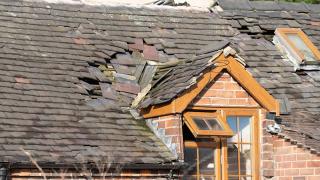Woodgate & Clark, one of the U.K.’s leading loss adjusters is urging insurance providers to consider more sustainable property repairs with the launch a new paper ‘Building resilience in property repairs through the circular economy’. Currently, 75% of construction waste that could be recycled or repurposed goes to landfill due to the lack of integrated waste management framework[i]. Circularity is a practice which focuses on reducing waste and recycling unavoidable waste, as much as possible to reduce CO2 emissions.
Since the ABI launched its Climate Change Roadmap is 2021, the UK has experienced its warmest year on record[ii]. The insurability and cost of climate related risks is of growing concern.
Despite the UK government introducing a legislative framework, The Circular Economy Package (CEP) is not construction specific. The U.K. could reduce global CO2 emissions from building materials by 38% in 2050[iii], by reducing demand for building materials such as metals, concrete, glass, plasterboard, plastic, timber, ceramics, insulation and packaging.
Nick Turner, Head of Surveying at Woodgate & Clark has authored the paper.
Nick Turner says: “Without government support it is up to those of us working in property insurance and property repairs to dial-up the conversation exploring circularity and find ways to put these ideas into practice. This industry is in a unique position to influence more sustainable decisions concerning property insurance claims and building repairs. More discussion is needed between insurance companies, regulators and the construction industry surrounding sustainable repairs, encouraging circularity to reduce waste, and increase the use of low carbon building materials.
“For example, we can ‘nudge’ builders and clients commissioning the work in the direction of greater circularity with simple yet effective changes to reduce waste and allow more recycling. This might include keeping records to prevent over ordering or providing dedicated areas for recyclable materials.
Along with a reduction in CO2 emissions, the paper discusses the benefits of circular practices such as resource efficiency, significant savings over the long term, risk mitigation, enhanced sustainability and market differentiation.
Nick Turner concludes: “There is no silver bullet to reducing the carbon footprint of insurance claims, but perhaps driving dialogue and awareness about the ways in which building practices could change to support the circular economy might help. This research paper has been created by Woodgate & Clark with that goal in mind.”
- [1]Source - Yeheyis M., Hewage K., Alam M.S., Eskicioglu C., Sadiq R. An overview of construction and demolition waste management in Canada: A lifecycle analysis approach to sustainability
- [1]https://www.metoffice.gov.uk/about-us/news-and-media/media-centre/weather-and-climate-news/2023/record-breaking-2022-indicative-of-future-uk-climate
- [1]https://www.ellenmacarthurfoundation.org/topics/built-environment/overview
- [i]Source - Yeheyis M., Hewage K., Alam M.S., Eskicioglu C., Sadiq R. An overview of construction and demolition waste management in Canada: A lifecycle analysis approach to sustainability
- [ii]https://www.metoffice.gov.uk/about-us/news-and-media/media-centre/weather-and-climate-news/2023/record-breaking-2022-indicative-of-future-uk-climate
- [iii]https://www.ellenmacarthurfoundation.org/topics/built-environment/overview





